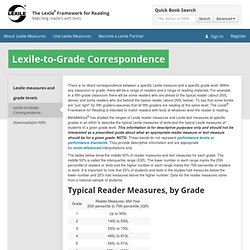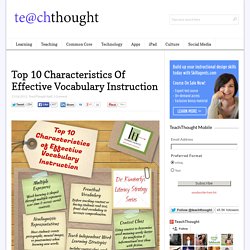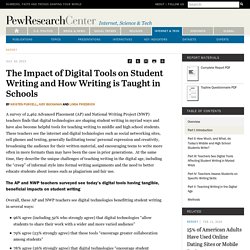

Close Reading/Crosscutting Concepts for Newton's 1st Law. Having just joined the #NGSSBlogs, I'm finding tons of helpful blogs from other science teachers who really care about shifting their practices into 3D Learning (that's the term for weaving content, practices and cross-cutting concepts together).

Today I'm responding to a post from science teachers in the Puget Sound area, "The Reasoning Problem". I feel so fortunate to find these kinds of things to read and learn from. How lucky are we to be in a profession where people want to share with each other for the good of the people we serve? It's always a little un-nerving to swap ideas with someone who you don't know. But I'm always in for a challenge. So the idea presented was how well the cross-cutting ideas would help students gain a broader and more specific understanding of what constitutes "reasoning". The first reading is about wolves and I really was impressed with the multiple readings routine. The general pattern seems to be that the 1st reading is for unknown words or phrases.
Lexile-to-Grade Correspondence. There is no direct correspondence between a specific Lexile measure and a specific grade level.

Within any classroom or grade, there will be a range of readers and a range of reading materials. For example, in a fifth-grade classroom there will be some readers who are ahead of the typical reader (about 250L above) and some readers who are behind the typical reader (about 250L below). To say that some books are "just right" for fifth graders assumes that all fifth graders are reading at the same level. The Lexile® Framework for Reading is intended to match readers with texts at whatever level the reader is reading.
MetaMetrics® has studied the ranges of Lexile reader measures and Lexile text measures at specific grades in an effort to describe the typical Lexile measures of texts and the typical Lexile measures of students of a given grade level. The tables below show the middle 50% of reader measures and text measures for each grade. Top 10 Characteristics Of Effective Vocabulary Instruction. By Kimberly Tyson, Ph.

D. of learningunlimitedllc.com We know that there is a strong relationship between vocabulary and reading comprehension. Systematic vocabulary instruction is an integral part of a K-12 comprehensive literacy framework for instruction. I consider it a privilege to have supported many teachers, coaches, & administrators in building a community that values word learning across classrooms and content areas. Common characteristics of effective vocabulary instruction have been documented in numerous professional journals and books.
Effective vocabulary instruction across grade levels and content areas is key. As part of 12 Days: 12 Tools I have shared 4 templates and tools for vocabulary. Tool 1: Top Tips for Words WallsTool 2: Concept CirclesTool 5: Marzano’s 6-Step Vocabulary ProcessTool 7: Alphaboxes Graphic Organizer Top 10 Characteristics of Effective Vocabulary Instruction You can put this infographic to use tomorrow; several immediate uses come to mind. 1. 2. 3. What’s So Hard About Research? We are told that the students that we teach are “digital natives.” This term implies that from the time they were born, technology has played such a large part in students’ lives that they know no other way. Also, it has been noted that digital natives have an aptitude for technology that is significantly different from the older generations (who have been dubbed “digital immigrants”); the joke goes that if you give a digital native and a digital immigrant a new digital camera, the native will be taking pictures before the immigrant has finished reading page two of the manual.
The assumption is that this new generation is simply better than us at technology. However, as we wrote about in another article for Scientific American , just because students are digital natives, does not mean that they have skills to figure out all technology, or to use technology in a purposeful way. Students can find out basic names, dates, and facts through online research. So what? Periodic Table of Storytelling. GUYS READ. Pew InternetThe Impact of Digital Tools on Student Writing and How Writing is Taught in Schools. A survey of 2,462 Advanced Placement (AP) and National Writing Project (NWP) teachers finds that digital technologies are shaping student writing in myriad ways and have also become helpful tools for teaching writing to middle and high school students.

These teachers see the internet and digital technologies such as social networking sites, cell phones and texting, generally facilitating teens’ personal expression and creativity, broadening the audience for their written material, and encouraging teens to write more often in more formats than may have been the case in prior generations. At the same time, they describe the unique challenges of teaching writing in the digital age, including the “creep” of informal style into formal writing assignments and the need to better educate students about issues such as plagiarism and fair use.
The AP and NWP teachers surveyed see today’s digital tools having tangible, beneficial impacts on student writing About this Study The basics of the survey. Teaching Nonfiction Reading Skills in the Science Classroom [ACTIVITY] Posted by Bill Ferriter on Monday, 05/20/2013 I don't have a ton of time to write today -- I've spent the past week teaching and learning alongside of some really progressive thinkers in Australia -- so I figured I'd share a few handouts that I've been using in class this year to teach nonfiction reading skills in my sixth grade science classroom.
![Teaching Nonfiction Reading Skills in the Science Classroom [ACTIVITY]](http://cdn.pearltrees.com/s/pic/th/teaching-nonfiction-classroom-58588283)
Each lesson is tied directly to a standard in the Common Core Literacy in History, Science and Technical Subjects curriculum -- and each lesson is designed to be used in tandem with a current event connected to the concepts that our students study. If you like the lessons, all you'll need to do is find a current event to teach them with! Hope they help someone: Active Reading Behaviors.